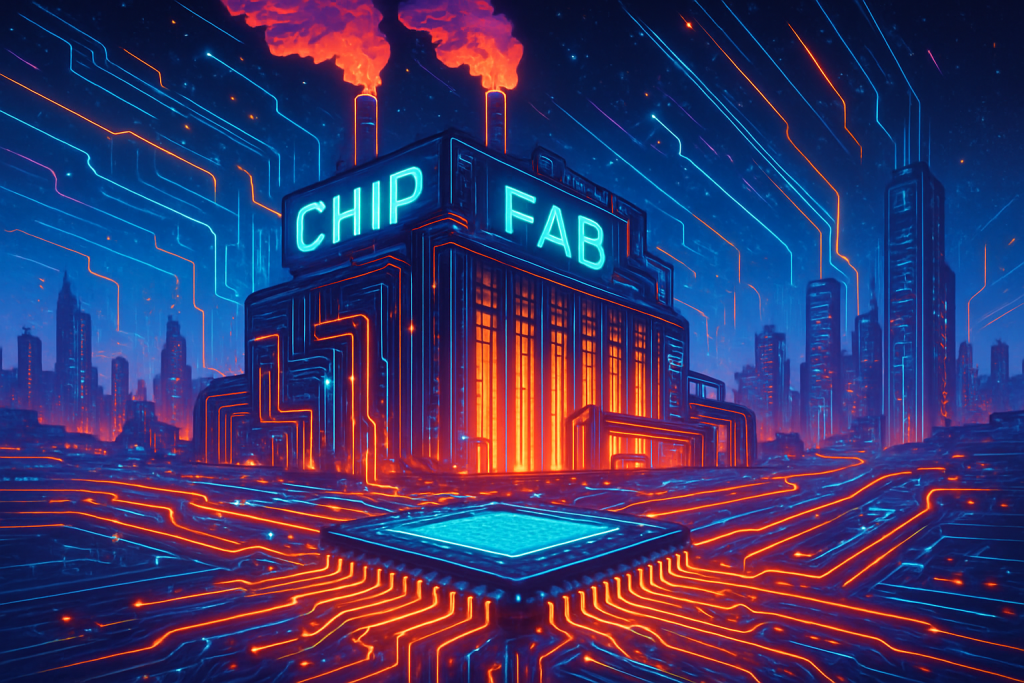Remember the Y2K scare? Everyone thought the world was going to end because computers couldn’t handle the year 2000. Fast forward 25 years, and we’re facing a different kind of tech-driven frenzy – the AI boom. But instead of apocalyptic fears, we’re seeing something far more… lucrative. Especially if you’re in the memory chip business.
Micron Technology, the Boise, Idaho-based semiconductor giant, just dropped a bombshell that sent ripples of excitement through the tech world. On August 11, 2025, they announced a significant upward revision of their fourth-quarter revenue and profit forecasts. The reason? AI, baby! It’s driving an insatiable demand for the memory chips that power these intelligent systems, and Micron is sitting pretty.
Think of it like this: AI is the new gold rush, and memory chips are the picks and shovels. You can’t build a massive AI data center without mountains of DRAM and NAND flash memory. These components are the unsung heroes, tirelessly processing and storing the colossal datasets that fuel everything from self-driving cars to personalized medicine. Micron specializes in this crucial hardware, and they’re reaping the rewards of a market hungry for AI capabilities.
The numbers speak for themselves. Micron now projects fourth-quarter revenue of $11.2 billion, a cool $500 million jump from their previous estimate of $10.7 billion. Earnings per share are also getting a boost, soaring to $2.85 from the earlier forecast of $2.50. And the cherry on top? An adjusted gross margin forecast of 44.5%, thanks to improved pricing, particularly for DRAM products. It’s enough to make even Gordon Gekko crack a smile.
The market responded predictably: Micron’s shares jumped nearly 5% in pre-market trading. Investors are clearly betting that Micron is well-positioned to capitalize on the AI-driven future. It’s a vote of confidence in the company’s strategic foresight and its ability to meet the escalating demands of the AI revolution.
But this isn’t just about short-term gains. Micron is playing the long game. They’ve announced a massive $30 billion expansion of their U.S. investments, bringing their total domestic commitments to a staggering $200 billion. This is a bold move, aligning perfectly with the U.S. administration’s push for domestic manufacturing and solidifying Micron’s role as a key player in the AI ecosystem. It’s like something straight out of a Captain America movie: American ingenuity and resources rising to meet a global challenge.
This news highlights a critical, often-overlooked aspect of the AI boom: the hardware infrastructure. We tend to focus on the algorithms, the models, and the software, but all that fancy code needs powerful hardware to run on. Memory chips are the backbone of AI, and Micron’s success underscores their vital role. It’s a reminder that even in the age of software-defined everything, physical infrastructure still matters.
The implications extend far beyond Micron’s bottom line. This surge in demand for memory chips signals the continued acceleration of AI adoption across various industries. From autonomous vehicles navigating our streets to AI-powered medical diagnoses saving lives, the applications are seemingly endless. And as AI becomes more integrated into our lives, the demand for the underlying hardware will only continue to grow.
This also raises some important questions. Can Micron and other memory chip manufacturers keep up with the relentless demand? Will supply chain bottlenecks become a constraint on AI development? And what about the ethical implications of relying so heavily on a few key companies for this critical technology? These are questions that policymakers, industry leaders, and even us humble tech bloggers need to grapple with.
From a societal perspective, this news further cements the narrative of AI as a transformative force, reshaping industries and creating new economic opportunities. However, it also underscores the need for responsible development and deployment. We need to ensure that the benefits of AI are shared broadly and that the technology is used to address some of the world’s most pressing challenges, not just to optimize targeted advertising.
And, of course, there’s the philosophical angle. As AI systems become more sophisticated, they’ll require even more memory and processing power. This raises deeper questions about the nature of intelligence, the limits of computation, and the potential for AI to surpass human capabilities. It’s a conversation straight out of a Philip K. Dick novel, and it’s one we need to start having seriously.
Micron’s success story is more than just a financial windfall for a semiconductor company. It’s a microcosm of the broader AI revolution, a testament to the power of innovation, and a reminder that even in the most futuristic technologies, the fundamentals still matter. So, next time you hear about the latest AI breakthrough, remember the unsung heroes: the memory chips that make it all possible.
Discover more from Just Buzz
Subscribe to get the latest posts sent to your email.


